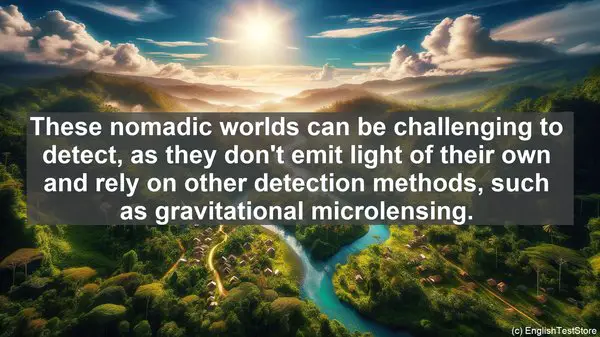Introduction to Exobiology
Exobiology, also known as astrobiology, is a fascinating field that explores the possibility of life beyond Earth. As with any scientific discipline, exobiology has its fair share of technical terms and jargon. In this lesson, we’ll focus on the top 10 words that often cause confusion. Let’s dive in!
1. Astrobiology vs. Exobiology
The terms ‘astrobiology’ and ‘exobiology’ are often used interchangeably, but they have slight differences. Astrobiology is the broader study of life in the universe, including its origin, evolution, and distribution. Exobiology, on the other hand, specifically focuses on the search for life beyond Earth. So, while all exobiologists are astrobiologists, the reverse isn’t always true.

2. Biosignature vs. Biomarker
Biosignatures and biomarkers are both indicators of past or present life. However, there’s a subtle distinction. A biomarker is a measurable substance or characteristic that provides direct evidence of life. For example, the presence of certain organic compounds. On the other hand, a biosignature is a broader term that encompasses any detectable feature, such as a pattern or anomaly, that suggests the presence of life. So, while all biomarkers are biosignatures, not all biosignatures are biomarkers.
3. Panspermia vs. Directed Panspermia
Panspermia is the hypothesis that life exists throughout the universe and can be distributed via objects like meteoroids or comets. It suggests that life on Earth may have originated from elsewhere. Directed panspermia, on the other hand, is a more specific concept. It proposes that life was deliberately sent to Earth by an advanced extraterrestrial civilization. While panspermia is a natural process, directed panspermia involves intelligent intervention.
4. Extremophile vs. Extremotolerant
Both extremophiles and extremotolerant organisms can survive in extreme environments. However, there’s a distinction in their abilities. Extremophiles are organisms that thrive in conditions considered extreme for most life forms, such as high temperatures or acidic environments. Extremotolerant organisms, on the other hand, can tolerate extreme conditions but may not necessarily thrive in them. They can survive, but their growth and reproduction may be limited.
5. Habitable Zone vs. Goldilocks Zone
The terms ‘habitable zone’ and ‘Goldilocks zone’ refer to the region around a star where conditions are suitable for the existence of liquid water, a key ingredient for life as we know it. The term ‘habitable zone’ is the more scientific and widely used term. ‘Goldilocks zone’ is a more colloquial term, popularized due to its analogy with the children’s story ‘Goldilocks and the Three Bears,’ where the porridge that Goldilocks finds ‘just right’ is neither too hot nor too cold.
6. Methanogenesis vs. Methanotrophy
Methanogenesis and methanotrophy are both processes involving methane, a potent greenhouse gas. Methanogenesis is the production of methane, often by microorganisms in anaerobic environments. Methanotrophy, on the other hand, is the consumption or oxidation of methane, typically by bacteria. These processes play a crucial role in the global carbon cycle.
7. SETI vs. METI
SETI, which stands for ‘Search for Extraterrestrial Intelligence,’ is a scientific endeavor to detect signals or signs of intelligent life beyond Earth. It involves listening for radio signals or other forms of communication. METI, on the other hand, stands for ‘Messaging Extraterrestrial Intelligence.’ It involves actively sending messages or signals to potential extraterrestrial civilizations. While SETI focuses on detection, METI is more about communication.
8. Exoplanet vs. Rogue Planet
Exoplanets are planets that orbit stars outside our solar system. They can be similar to Earth or vastly different. Rogue planets, on the other hand, are not bound to any star. They wander through space, untethered to a parent star’s gravitational pull. These nomadic worlds can be challenging to detect, as they don’t emit light of their own and rely on other detection methods, such as gravitational microlensing.
9. Dyson Sphere vs. Dyson Swarm
Both Dyson spheres and Dyson swarms are hypothetical megastructures proposed by physicist Freeman Dyson. A Dyson sphere is a structure that completely encloses a star to harness its energy. It’s often depicted as a solid shell. A Dyson swarm, on the other hand, is a collection of numerous smaller structures, such as solar panels or satellites, that orbit the star. While a Dyson sphere is a singular structure, a Dyson swarm is more distributed.
10. Fermi Paradox vs. Great Filter
The Fermi paradox and the Great Filter are concepts related to the apparent contradiction between the high probability of extraterrestrial life’s existence and the lack of contact or evidence. The Fermi paradox highlights this discrepancy, named after physicist Enrico Fermi. The Great Filter, on the other hand, is a proposed barrier or event that prevents civilizations from progressing to the point of interstellar communication. It could be a rare and difficult step in a civilization’s development.

